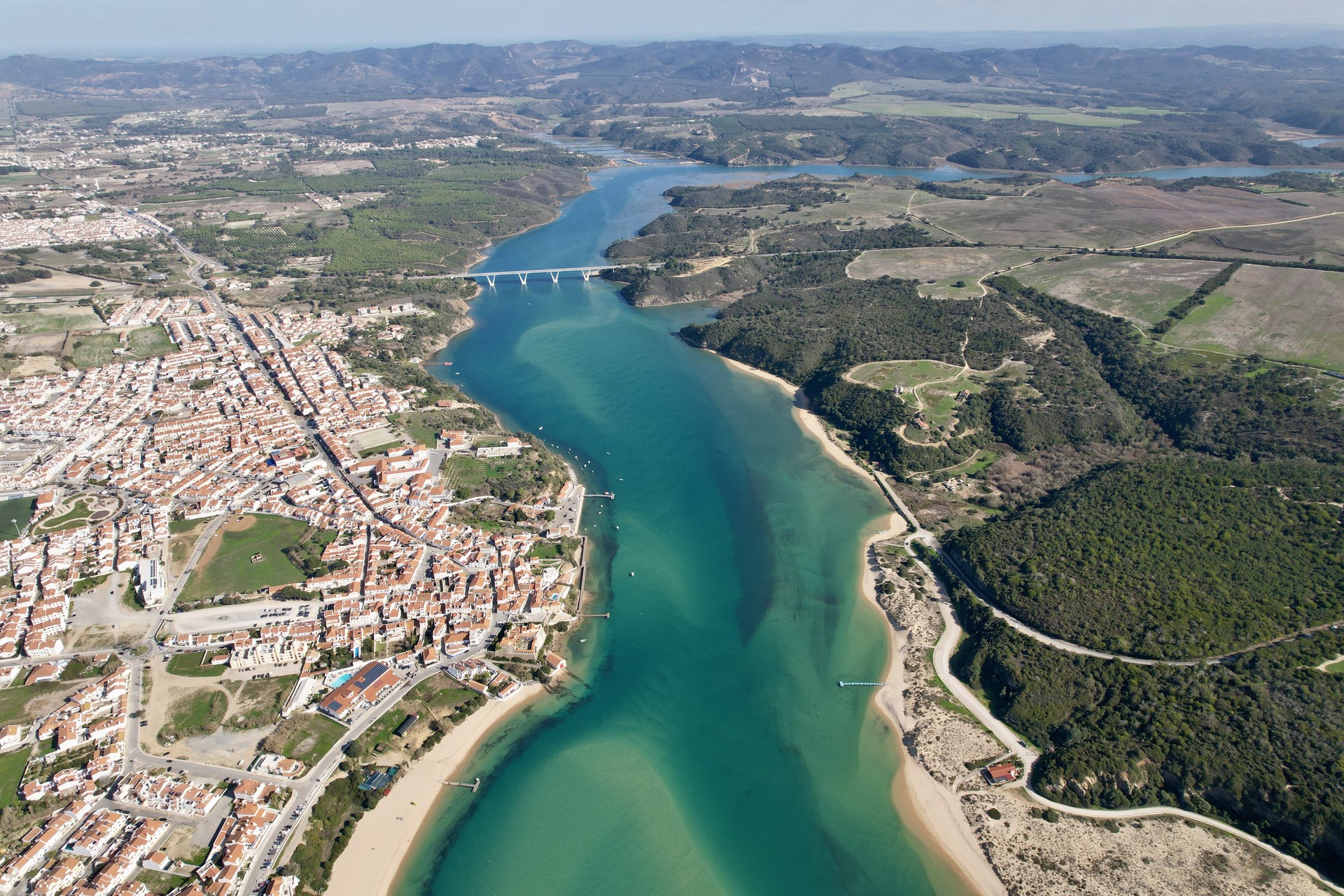Vila Nova de Milfontes
A Princesa do Alentejo
Vila Nova de Milfontes shines as a hidden gem on Portugal’s southwest coast.
This charming village, often hailed as the Princess of Alentejo, offers a blend of natural beauty, historical richness, and serene waters, making it an idyllic retreat for nature lovers and surf enthusiasts.
A Village Steeped in History and Natural Splendor
Contrary to its name, Vila Nova de Milfontes is not new nor does it boast a thousand fountains.
Established in 1486 by King D. João II, this picturesque village has flourished near the Mira River, evolving from a quaint fishing community into a vibrant tourist destination without losing its authentic charm.
Surrounded by the pristine landscapes of the Southwest Alentejo and Costa Vicentina Natural Park, Vila Nova de Milfontes is a haven for adventurers and those seeking a tranquil escape.
The village’s unique position, bordered by the Mira River and the Atlantic Ocean, presents unparalleled opportunities for water sports, especially surfing, kayaking, and stand-up paddleboarding.

Embark on a Journey of Discovery
Vila Nova de Milfontes invites you to explore its historic sites and breathtaking natural attractions. From the lively Largo do Rossio, once the heart of daily commerce and social gatherings, to the imposing Forte de São Clemente, built to protect the village from pirate raids, every corner tells a story. The beaches of Praia da Franquia and Praia do Farol, recognized for their calm waters and Gold Quality status by Quercus, offer perfect conditions for water activities in Vila Nova de Milfontes. The cleanest river in Europe, the Mira River, is a preferred spot for Olympic canoeing training, thanks to its gentle waves and clear waters.
Explore Beyond Vila Nova de Milfontes
Vila Nova de Milfontes is not only about serene beaches and historical landmarks. It’s a gateway to the Rota Vicentina, a network of trails that showcase the untouched beauty of Portugal’s southwest coast. Whether you’re a seasoned hiker or a casual walker, the trails offer breathtaking views and a chance to immerse yourself in the region’s rich rural culture.
A Surfing Paradise Awaiting Your Discovery
For surf enthusiasts, Vila Nova de Milfontes is a paradise yet to be fully discovered. The diverse coastline, with spots suitable for all levels, ensures that every surfer, whether novice or expert, finds their perfect wave. Embrace the opportunity to connect with the local surfing community, enhance your skills, and experience the exhilarating freedom of riding the waves in one of Portugal’s most stunning locations.
Why Visit Vila Nova de Milfontes?
Vila Nova de Milfontes is more than just a destination, it’s an experience. From its rich history and natural beauty to its vibrant surf scene and welcoming community, there’s something for everyone. Whether you’re seeking adventure, relaxation, or a taste of local culture and cuisine, this enchanting village promises unforgettable memories.
Embark on your journey to Vila Nova de Milfontes. Discover its hidden treasures, ride the waves, and let the beauty of the Alentejo coast captivate your heart.